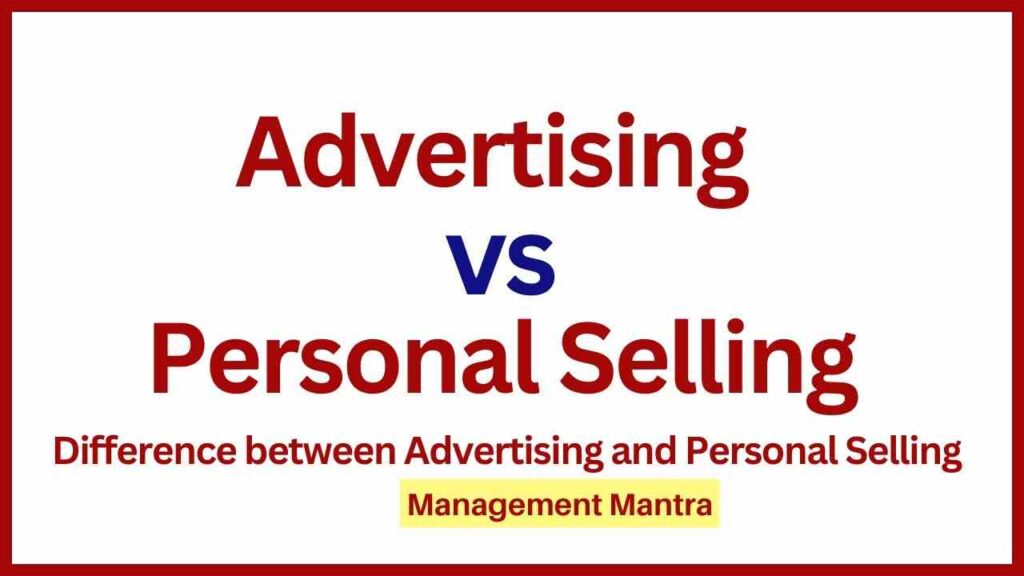
Explore 12 Key Difference between Advertising and Personal Selling
Welcome to the fascinating world of marketing! In this insightful article, we’ll explore the difference between advertising and personal selling, unraveling the unique approaches that businesses employ to capture attention and drive sales. Let’s dive in!
Difference between Advertising and Personal Selling
Advertising and personal selling are two distinct yet complementary approaches to promoting products and services. While both aim to generate sales and increase brand awareness, they differ in several key aspects. Here are 12 fundamental difference between advertising and personal selling:
Communication Style: Advertising relies on mass communication, reaching a large audience through outlets like television, print, and online platforms. Personal selling, in contrast, entails direct, one-on-one interactions with potential clients.
Targeting of Audience: Personal selling focuses on particular people or groups based on their needs, preferences, and potential as customers, whereas advertising frequently targets a wider audience.
Control: Because advertisements are prepared in advance and are delivered to the intended audience, they offer little control over the delivery of the message. Personal selling gives salespeople more control because they can modify their message in response to the customer’s reaction and feedback.
Interaction: Advertising doesn’t allow for immediate customer interaction, but personal selling does. This allows salespeople to deal with questions, concerns, and objections in the moment.
Customization: Marketing messages are typically uniform and geared towards a wide audience. In personal selling, the message can be tailored to each customer’s needs, increasing the likelihood that a sale will be made.
Cost: Investing heavily in advertising is frequently necessary, particularly for large-scale campaigns using multiple channels. When aiming for a smaller customer base, personal selling can be more cost-effective even though it involves expenses for hiring and training salespeople.
Reach: Even across different geographical locations, advertising has the potential to reach a sizable audience. Contrarily, the number of salespeople and their capacity to physically meet with customers are constraints on personal selling.
Feedback: Advertising offers little immediate feedback, making it difficult to accurately gauge consumer response. Instant feedback from personal selling enables salespeople to modify their strategies and better comprehend client needs.
Persuasiveness: Advertising uses inventive messaging, eye-catching imagery, and repetition to persuade consumers. Personal selling makes use of communication abilities, relationship-building techniques, and persuasive sales pitch customization.
Timing: Since advertisements are frequently viewed by a large audience over an extended period of time, they can raise awareness and spark interest over the long term. Since salespeople can directly influence customers’ purchasing decisions while interacting, personal selling can produce quick results.
Longevity: Advertising messages have a longer shelf life, allowing brands to maintain their brand identity and market presence even after a campaign has ended. Personal selling is transient and is contingent on salespeople’s availability.
Relationship Building: Brand awareness and loyalty are the main goals of advertising. Salespeople who use personal selling can get to know their clients better, which builds trust and may result in repeat business.
For businesses to make informed decisions about their marketing strategies, it is essential to comprehend these important distinctions between advertising and personal selling. Utilising the benefits of both strategies, businesses can increase sales and forge enduring relationships with customers.
Also Read: Explore Key 12 Difference between Act and Law in simple terms